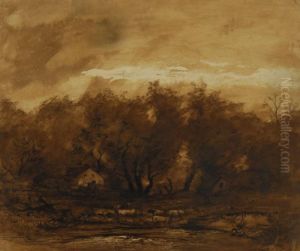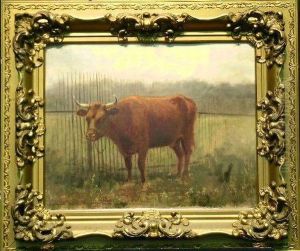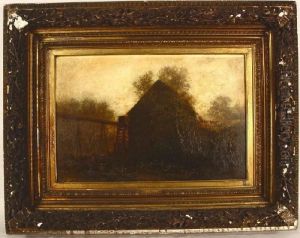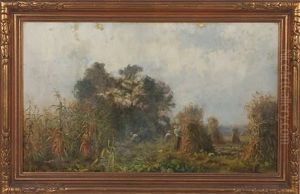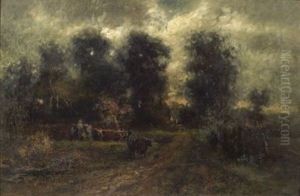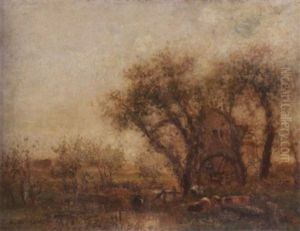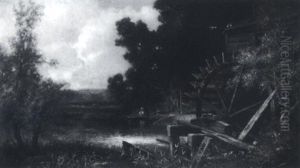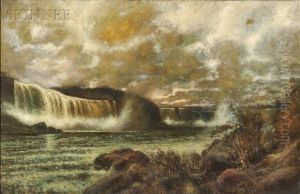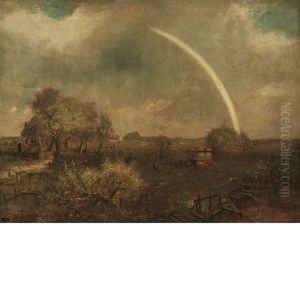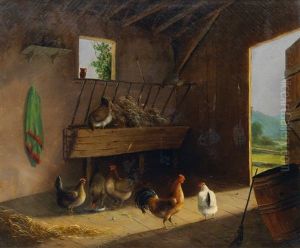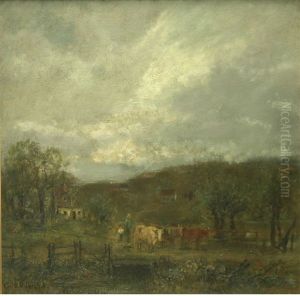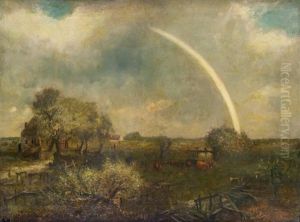Charles Henry Miller Paintings
Charles Henry Miller was an American artist renowned primarily for his romantic landscape paintings. Born on March 20, 1842, in New York City, Miller developed an affinity for the natural world early on, which would heavily influence his artistic career. He initially pursued a medical education, earning a degree from the University of the City of New York in 1865. Despite this, his love for art prevailed, and he traveled to Europe to study painting shortly after.
In Europe, Miller studied under notable artists and was particularly influenced by the Barbizon school in France, which emphasized naturalism and pastoral themes. After honing his skills abroad, he returned to the United States, where he became known for his depictions of the Long Island landscape. His paintings often featured serene rural scenes and were celebrated for their realistic portrayal of light and atmosphere.
Throughout his life, Miller was a prominent figure in the American art community. He received numerous awards for his work, including a medal at the Paris Exposition of 1878. He was also a member of various art organizations and served as president of the New York Art Club. Miller's art was widely exhibited during his lifetime, and he enjoyed the patronage of many art collectors.
Miller's dedication to capturing the essence of Long Island's scenery earned him the nickname 'the artist of the New England countryside.' His commitment to painting local landscapes helped to foster an appreciation for the preservation of natural spaces during a time of rapid industrialization.
Charles Henry Miller passed away on January 21, 1922, leaving behind a legacy that cemented him as a significant figure in the American landscape painting tradition. His works continue to be appreciated for their beauty and historical value, encapsulating a vision of America's natural landscapes during the late 19th and early 20th centuries.









